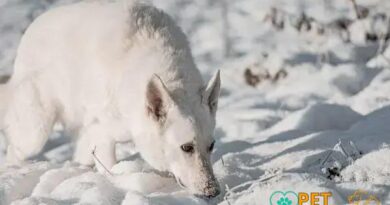Curiosities about the Nova Scotia Duck Tolling Retriever: Fun Facts Unveiled
If you love dogs, you’ll be fascinated by the Nova Scotia Duck Tolling Retriever. In this blog post, we’ll dive into some intriguing curiosities about the Nova Scotia Duck Tolling Retriever, covering their history, unique traits, and tips for training and care. Stay with us to learn more about this incredible breed!
Origin and History
Originating from Nova Scotia, Canada, the Nova Scotia Duck Tolling Retriever was primarily bred for hunting purposes. The breed’s history dates back to the early 19th century when hunters needed a dog that could both lure waterfowl and retrieve them. The term ‘Toller’ is derived from the Middle English word ‘tollen’, which means ‘to lure’ or ‘to entice’.
Their development involved crossbreeding between Golden Retrievers, Cocker Spaniels, and possibly small European Spaniels, among others. This resulted in a versatile hunting companion known for its intelligence, agility, and exceptional retrieving ability both on land and in the water.
Recognized for its unique method of attracting ducks, the Duck Tolling Retriever would play along the shoreline, capturing the attention of curious fowl. This trait, combined with their vibrant coat color, made them exceptional hunting partners. The breed’s official recognition by major kennel clubs didn’t occur until the latter part of the 20th century, with The Canadian Kennel Club acknowledging them first in 1945 followed by the American Kennel Club in 2003.
Their fascinating history reflects not only their hunting expertise but also their cultural importance within the Nova Scotia region.
Unique Traits and Characteristics
The Nova Scotia Duck Tolling Retriever stands out with a distinct set of traits. Known for their exceptional intelligence, this breed is quick to learn new commands and can perform complex tasks with ease. Their high energy levels make them ideal companions for active families and outdoor enthusiasts. These dogs are incredibly agile, showcasing impressive speed and dexterity during play and work.
Another remarkable aspect is their unique tolling behavior, which is how they got their name. They lure waterfowl by performing playful movements along the shoreline, a trait that is both fascinating and effective. Furthermore, their double coat provides excellent insulation against cold and water, allowing them to thrive in various weather conditions.
Tollers are also noted for their friendly and affectionate nature. They form strong bonds with their human families and are excellent with children and other pets. Their alertness and keen senses make them great watchdogs, although they are not typically aggressive. Overall, the Nova Scotia Duck Tolling Retriever’s unique traits contribute to its charm and versatility as a beloved breed.
Training and Care Tips
Positive Reinforcement: The Nova Scotia Duck Tolling Retriever responds exceptionally well to positive reinforcement techniques like treats and praise. Consistency and patience are key.
Socialization:
Start socializing your puppy early. Expose them to different environments, people, and other dogs. This helps in preventing behavior issues. Exercise: This breed is highly energetic and requires regular exercise to stay healthy and happy. Daily walks, play sessions, and mental stimulation activities are essential.
Grooming:
Brush their coat weekly to remove loose hairs and reduce shedding. Pay attention to their ears and teeth to avoid infections. Balanced Diet: Provide a balanced diet rich in proteins and essential nutrients. Consult your veterinarian for specific dietary needs.
Training Sessions:
Keep training sessions short and engaging. Use a mix of commands and fun activities to keep their attention. Consistency is critical for successful training. Healthcare: Regular vet check-ups are crucial. Stay updated with vaccinations and parasite control. Early detection of health issues can lead to better management.




